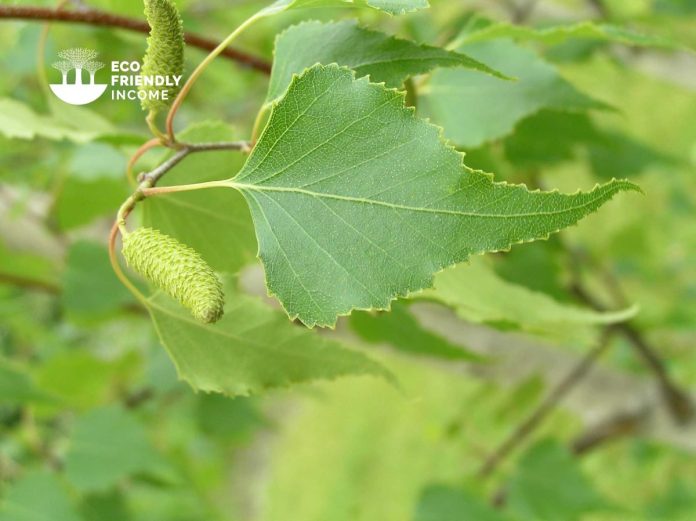
Featured Photo by S. Rae / CC BY 2.0
A field guide on how to identify and propagate Gray Birch (Betula populifolia), a hardy tree that is native to eastern North America.
How to Identify Gray Birch (Betula populifolia)
Leaves
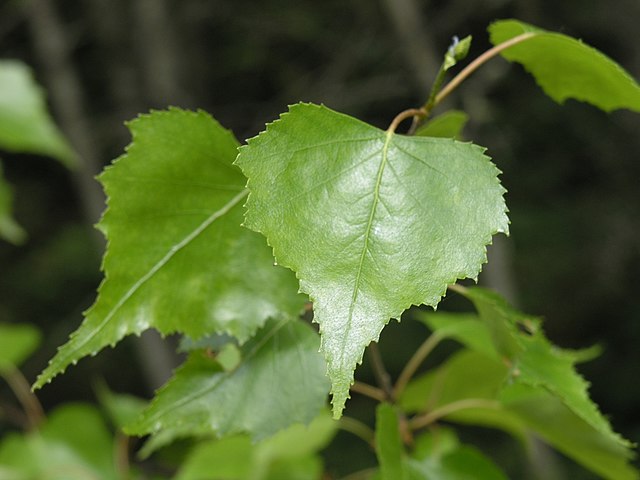
Gray Birch leaves are heart-shaped with a long pointed tip, and doubly serrate margins. They grow in an alternate, but sometimes opposite arrangement along the stems.
Bark
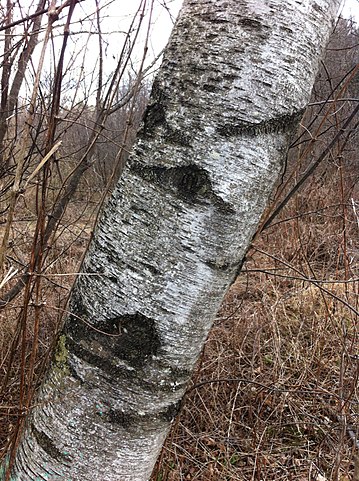
The bark of Betula populifolia is smooth, gray-white in color, and has a slightly scaly texture.
If you look closely, you can see that the bark is covered with lenticels, which are small, raised pores that allow for the exchange of oxygen and other gases between the bark and the atmosphere.
As opposed to paper birch, you can’t easily peal the bark from the trunk of gray birch trees.
Catkins
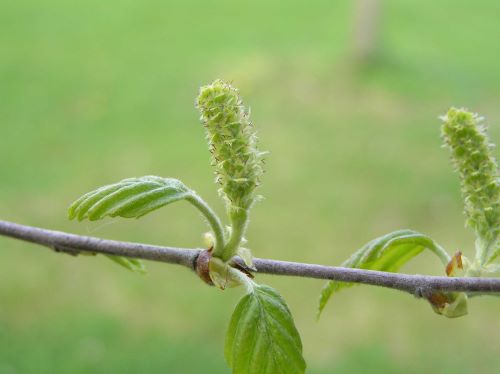
Gray birch catkins, as opposed to paper birch, produce solitary catkins that rarely grow in pairs.
Male catkins usually grow at the end of the twigs in a pendulous growth while female catkins are smaller but grow upright on the stems.
Flowering Season
You can spot catkins on gray birch trees from late spring to early summer.
Female catkins start drooping downwards as they mature, and their winged seeds spread naturally by late autumn through winter.
Habitat
Betula populifolia, commonly known as the gray birch, is a species of birch tree native to North America.
You can find it growing naturally only in a small range, mostly in the Acadian, and Eastern-Boreal Transition Forests.
It typically grows in moist soils in mixed forests, open woodlands, and along streams. It prefers full sun to partial shade and is often found in areas close to wetlands and other moist areas.
Some trees & understory plants that often associate with gray birch are:
- Canada Serviceberry (Amelanchier canadensis)
- Northern Bayberry (Myrica pensylvanica)
- Blueberry (Vaccinium sp.)
- Red Oak (Quercus borealis)
Wildlife Value
Gray birch bark and wood are chewed on by beavers and porcupines, and the sap is fed on by sapsuckers.
The seeds are eaten by songbirds such as the pine siskin and chickadee, while the male catkins and buds are consumed by ruffed grouse.
Twigs are used as winter browse by snowshoe hares, moose, and white-tailed deer.
How to Propagate Gray Birch (Betula populifolia)

Hardiness Zone: 3-7

Soil Type: Clay, loam, sand.

Water: Normal

Exposure: Full Sun to Partial Shade
You can propagate Gray Birch (Betula populifolia) by two methods:
- Stem Cuttings: It provides established trees faster, but is tricky, and will probably have a lower success rate.
- By Seed: The success rate is high but takes longer to get established saplings.
Personally, I have never been able to successfully propagate birch by cuttings, they seem to be very tricky.
If you know the trick yourself, please mention down in the comments below!
Considering this, I will only focus on seeds, which have worked quite successfully for me.
Let’s take a look:
How to Propagate Gray Birch (Betula populifolia) by Seed
Gray birch is fairly easy to propagate, it produces a lot of seeds that can be germinated right away without cold stratification.
If you can identify a tree nearby, harvesting the seeds is just about timing, and maybe a bit of luck (since they can sometimes be hard to reach)!
Alternatively, you can order gray birch seeds online at Ferri Seeds.
How to Harvest Seeds
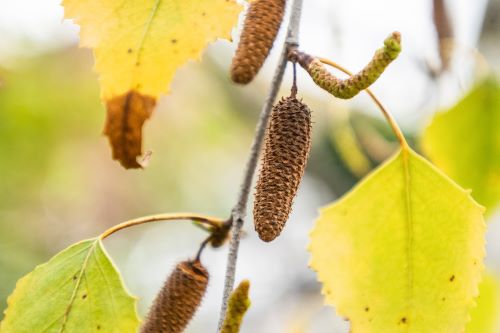
Gray birch seeds mature by autumn and may persist on trees through winter.
If you look closely, they look like little seagulls with wings.
You can find them on the tree in catkin form. Like this, all you need to do is pull them off the stem into a bag for storage, or you could even spot them during winter in the snow.
Sowing
Gray birch seeds usually go into dormancy through winter and germinate in the spring.
What’s interesting here is that it doesn’t necessarily need this process to germinate, unlike most northern plants.
You can break gray birch seed dormancy with water, and light.
To sow:
- Surface sow, preferably onto a sandy substrate.
- Then moisten, and cover the planter with plastic wrap.
Keep the seeds in a well-lit area, and they should germinate within a week.
FAQ
Q: How tall is gray birch?
A: Gray Birch typically has a height of 20-30 feet and a spread of 10-20 feet, often forming open thickets in the wild. However, with proper training, it can be grown with a single, slender trunk and an irregular, upright, pyramidal silhouette.
Q: Where is gray birch native to?
A: Gray birch, Betula populifolia, is a deciduous tree that is native to eastern North America.
Q: Is gray birch a good tree?
A: Gray birch is an outstanding tree for urban environments, and is second only to river birch in terms of tolerance for hot and humid climates. It develops quickly and, when mature, has a slender shape, with young trees’ bark having a yellowish hue that eventually turns to a stunning silvery-gray. Additionally, this species is highly resistant to bronze birch borer infestations.
Q: How long do grey birch trees live?
A: Small trees of the gray birch species have a life span of about 50 years and thrive in sandy or gravelly soil, on abandoned pastures, and in areas that have recently been clear-cut or burned.
